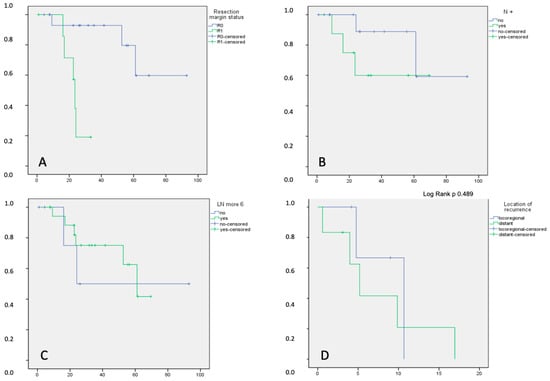Journal Description
Gastroenterology Insights
Gastroenterology Insights
is an international, scientific, peer-reviewed open access journal on gastrointestinal diseases published quarterly online by MDPI (from Volume 11 Issue 1 - 2020).
- Open Access— free for readers, with article processing charges (APC) paid by authors or their institutions.
- High Visibility: indexed within Scopus, ESCI (Web of Science), Embase, and other databases.
- Rapid Publication: manuscripts are peer-reviewed and a first decision is provided to authors approximately 32.6 days after submission; acceptance to publication is undertaken in 7.3 days (median values for papers published in this journal in the second half of 2023).
- Recognition of Reviewers: reviewers who provide timely, thorough peer-review reports receive vouchers entitling them to a discount on the APC of their next publication in any MDPI journal, in appreciation of the work done.
- Gastroenterology Insights is a companion journal of Life.
Impact Factor:
2.9 (2022);
5-Year Impact Factor:
2.2 (2022)
Latest Articles
Duodenal Adenocarcinoma: The Relationship between Type of Surgery and Site of Recurrence in a Spanish Cohort
Gastroenterol. Insights 2024, 15(2), 342-353; https://doi.org/10.3390/gastroent15020023 (registering DOI) - 24 Apr 2024
Abstract
We present a multicenter retrospective study of patients undergoing surgery for duodenal adenocarcinoma, from January 2010 to August 2020, in order to determine the epidemiological characteristics and the oncological results after surgical resection obtained in this rare tumor. Variables: demographics; tumor location; surgical
[...] Read more.
We present a multicenter retrospective study of patients undergoing surgery for duodenal adenocarcinoma, from January 2010 to August 2020, in order to determine the epidemiological characteristics and the oncological results after surgical resection obtained in this rare tumor. Variables: demographics; tumor location; surgical intervention and immediate postoperative period; and post-surgical follow-up information, such as recurrence, overall survival (OS), and disease-free survival (DFS). A total of 32 patients underwent surgery. The median age was 69.74 years (IQR 60.47–79.09) and the male/female distribution was 3:1. The surgeries performed were: pancreaticoduodenectomy (PD) in 16 (50%) patients, segmental resection in 13 (40.6%), and the local excision of the lesion in three (9.4%). The R0 rate was higher in PD (86.7% vs. 42.9%; p = 0.013). The OS and DFS rate at one, three and five years was 95%, 70%, and 60% and 86%, 55%, and 48%, respectively. There was a greater trend towards recurrence in patients who did not undergo PD (53.8% vs. 25%; p = 0.14) and conservative surgery seemed to be associated with more local recurrence than PD (57.1% vs. 33.3%; p = 0.49). PD and limited resection are both valid options in the cases of non-ampullary duodenal adenocarcinoma, although PD presented lower rates of loco-regional recurrence.
Full article
(This article belongs to the Section Gastrointestinal Disease)
►
Show Figures
Open AccessReview
The Pathogenesis of Pancreatitis and the Role of Autophagy
by
Ioannis Tsomidis, Argyro Voumvouraki and Elias Kouroumalis
Gastroenterol. Insights 2024, 15(2), 303-341; https://doi.org/10.3390/gastroent15020022 - 22 Apr 2024
Abstract
The pathogenesis of acute and chronic pancreatitis has recently evolved as new findings demonstrate a complex mechanism operating through various pathways. In this review, the current evidence indicating that several mechanisms act in concert to induce and perpetuate pancreatitis were presented. As autophagy
[...] Read more.
The pathogenesis of acute and chronic pancreatitis has recently evolved as new findings demonstrate a complex mechanism operating through various pathways. In this review, the current evidence indicating that several mechanisms act in concert to induce and perpetuate pancreatitis were presented. As autophagy is now considered a fundamental mechanism in the pathophysiology of both acute and chronic pancreatitis, the fundamentals of the autophagy pathway were discussed to allow for a better understanding of the pathophysiological mechanisms of pancreatitis. The various aspects of pathogenesis, including trypsinogen activation, ER stress and mitochondrial dysfunction, the implications of inflammation, and macrophage involvement in innate immunity, as well as the significance of pancreatic stellate cells in the development of fibrosis, were also analyzed. Recent findings on exosomes and the miRNA regulatory role were also presented. Finally, the role of autophagy in the protection and aggravation of pancreatitis and possible therapeutic implications were reviewed.
Full article
(This article belongs to the Special Issue Recent Advances in the Management of Gastrointestinal Disorders)
►▼
Show Figures
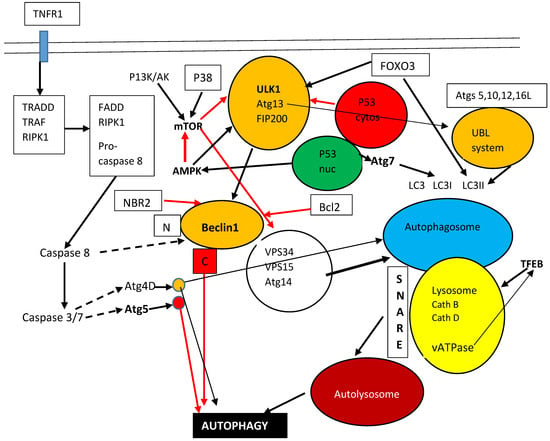
Figure 1
Open AccessArticle
Prevention of Musculoskeletal Injuries in Gastrointestinal Endoscopists
by
Tadej Durič, Ivana Cibulkova and Jan Hajer
Gastroenterol. Insights 2024, 15(2), 285-302; https://doi.org/10.3390/gastroent15020021 - 14 Apr 2024
Abstract
Gastroenterologists are exposed daily to musculoskeletal (MSK) stress during upper and lower gastrointestinal endoscopy, both during routine endoscopies and during long, demanding therapeutic procedures. There is evidence that endoscopy-related MSK injuries are becoming more common, particularly in the back, neck, shoulders, elbows, and
[...] Read more.
Gastroenterologists are exposed daily to musculoskeletal (MSK) stress during upper and lower gastrointestinal endoscopy, both during routine endoscopies and during long, demanding therapeutic procedures. There is evidence that endoscopy-related MSK injuries are becoming more common, particularly in the back, neck, shoulders, elbows, and hands. The aims of this study were to identify the most stressed muscle groups during endoscopy; to measure their activity using surface electromyographical (EMG) sensors; to detect areas of muscle overload; and to identify the number of microbreaks taken in specific muscles. Furthermore, we measured differences in the loading of these muscle groups with and without the use of special support systems such as a belt-like holder. Measurements were performed on 15 subjects (7 experienced endoscopists and 8 non-endoscopists). Due to this small sample size, inside each group, we achieved inconclusive results regarding statistically significant differences in different muscle groups. We increased the sample size by comparing all participants with and without the belt support system, disregarding their endoscopic background. There was a statistically significant difference (p < 0.05) in muscle tension and in levels of microbreaks in the muscles of the left forearm, biceps, and trapezius muscles. No statistically significant difference was observed in the muscle tension and level of microbreaks in the left deltoid muscle (p > 0.05). We hypothesize that the increased level of muscle loading and decreased level of microbreaks in the deltoid muscle are due to different muscle activity and different shoulder movements. Additionally, the deltoid muscle is not connected to the kinetic chain of body posture and stabilization. It is our belief that MSK injuries in gastrointestinal (GI) endoscopy can be prevented with the use of a belt-like support system.
Full article
(This article belongs to the Section Gastrointestinal and Hepato-Biliary Imaging)
►▼
Show Figures

Figure 1
Open AccessArticle
Interventional Treatment of Malignant Biliary Obstruction: Is It Time to Change the Paradigm?
by
Bozhidar Hristov, Daniel Doykov, Vladimir Andonov, Mladen Doykov, Krasimir Kraev, Petar Uchikov, Rosen Dimov, Gancho Kostov, Siyana Valova, Katya Doykova, Dzhevdet Chakarov and Milena Sandeva
Gastroenterol. Insights 2024, 15(2), 266-284; https://doi.org/10.3390/gastroent15020020 - 08 Apr 2024
Abstract
Introduction. Biliary obstruction is a common manifestation of biliopancreatic malignancies, and its relief is an essential part of the treatment algorithm. Currently, there are three techniques to manage malignant biliary obstruction—endoscopic retrograde cholangiopancreatography (ERCP), percutaneous transhepatic biliary drainage (PTBD), and endoscopic ultrasound-guided biliary
[...] Read more.
Introduction. Biliary obstruction is a common manifestation of biliopancreatic malignancies, and its relief is an essential part of the treatment algorithm. Currently, there are three techniques to manage malignant biliary obstruction—endoscopic retrograde cholangiopancreatography (ERCP), percutaneous transhepatic biliary drainage (PTBD), and endoscopic ultrasound-guided biliary drainage (EUS-BD). ERCP has been adopted as a first-line treatment modality but EUS-BD is gradually emerging as a viable alternative. The aim of the current article is to assess the clinical outcomes of the three nonsurgical biliary drainage procedures. Materials and methods. A total of 102 consecutive patients with unresectable biliopancreatic malignancy inducing biliary obstruction and subjected to palliative treatment by means of ERCP, EUS-BD, or PTBD were retrospectively included in the study. Results. No difference in clinical and technical success of the procedures was found: ERCP—97.2% technical; 88.9% clinical; PTBD—94.4% technical, 72.2% clinical; EUS-BD—90% technical; 83.3% clinical. Adverse events (AEs) and reinterventions were significantly more common in PTBD (38.9% and 52.8%) and ERCP (27.9% and 25%) compared to EUS-BD (10% and 3.3%). Total duration of hospital stay and number of hospitalizations were lower in the EUS-BD compared to PTBD and ERCP groups. Conclusions. In the presence of adequate expertise, EUS-BD may be superior to PTBD and ERCP in achieving and sustaining biliary drainage in the setting of unresectable malignancy.
Full article
(This article belongs to the Section Biliary Content)
►▼
Show Figures
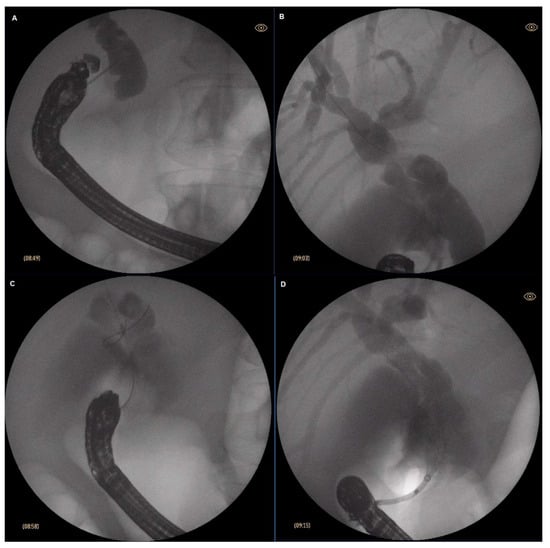
Figure 1
Open AccessArticle
Increased Serum Apelin Levels in Patients with Inflammatory Bowel Disease
by
Aikaterini Mantaka, Konstantina Kalyvianaki, Olga Kastritsi, Marilena Kampa and Ioannis E. Koutroubakis
Gastroenterol. Insights 2024, 15(2), 255-265; https://doi.org/10.3390/gastroent15020019 - 08 Apr 2024
Abstract
Apelin has been implicated in the pathogenesis of several chronic inflammatory diseases through mechanisms related to endothelial cells dysfunction. There is evidence of increased apelin levels in mesenteric adipose tissue and colonic epithelium in patients with inflammatory bowel disease (IBD), but their significance
[...] Read more.
Apelin has been implicated in the pathogenesis of several chronic inflammatory diseases through mechanisms related to endothelial cells dysfunction. There is evidence of increased apelin levels in mesenteric adipose tissue and colonic epithelium in patients with inflammatory bowel disease (IBD), but their significance remains unclear. We aimed to measure serum apelin (SA) levels in patients with IBD and to evaluate an association with disease characteristics. SA levels of 104 IBD patients and age and sex matched healthy controls (HCs) in a 1:1 ratio were compared. SA-13 levels were measured using an enzyme-linked immunosorbent assay (ELISA). Mean SA levels were increased in IBD patients compared to HCs (1996.29 ± 1592.96 pg/mL vs. 1552.99 ± 809.64 pg/mL, p = 0.012). Both patients without and with cardiovascular disease (CVD) had increased SA levels (2076.44 ± 1714.74 pg/mL vs. 1525.75 ± 818.74 pg/mL, p = 0.011 and 1743.01 ± 1116.26 pg/mL vs. 1283.92 ± 726.85 pg/mL, p = 0.035, respectively). An inverse association between mean SA levels and a history of musculoskeletal extraintestinal manifestations in the subgroup of IBD patients without CVD was found (p = 0.043). The present study—the first to evaluate SA levels in patients with IBD—showed that IBD patients have higher levels of SA compared to HCs. The potential role of SA in IBD merits further investigation in larger studies.
Full article
(This article belongs to the Section Gastrointestinal Disease)
Open AccessCase Report
Gastrointestinal Granular Cell Tumor: The First Report of a Multifocal and Potentially Hereditary Case
by
Riccardo Sigon, Lisa Fusaro, Fabio Monica and Michele Campigotto
Gastroenterol. Insights 2024, 15(1), 248-254; https://doi.org/10.3390/gastroent15010018 - 13 Mar 2024
Abstract
Granular cell tumors (GCTs), also known as Abrikossoff tumors, are rare tumors that originate from Schwann cells that primarily localize in the tongue, skin and submucosal tissues and involve the gastrointestinal tract in 11% of cases. We present a case of a young
[...] Read more.
Granular cell tumors (GCTs), also known as Abrikossoff tumors, are rare tumors that originate from Schwann cells that primarily localize in the tongue, skin and submucosal tissues and involve the gastrointestinal tract in 11% of cases. We present a case of a young woman who first presented to our center in 2018 for an EGDS to assess a thickening of the esophageal wall, seen on a CT. On that occasion, a diagnosis of Abrikossoff tumor was made. She underwent endoscopic resection with subsequent yearly follow-up without evidence of recurrence. Five years later, during a routine colonoscopy, we found numerous white submucosal formations in all of the explored tracts, with a histological examination compatible with GCTs. Her daughter presented with a white nodule on her tongue, also diagnosed as a GCT. Her daughter was also diagnosed with a GCT of the tongue a few months later. Our research represents a significant contribution to the field given that it presents the first documented case of a patient with multifocal gastrointestinal GCTs and suggests a potential hereditary component.
Full article
(This article belongs to the Section Gastrointestinal Disease)
►▼
Show Figures
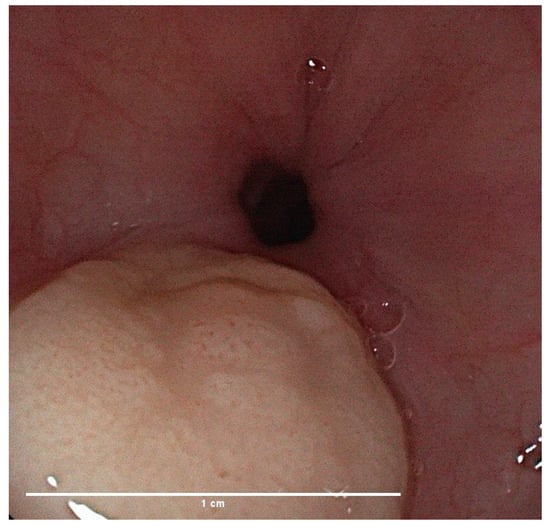
Figure 1
Open AccessArticle
EncephalApp Stroop Test as a Screening Tool for the Detection of Minimal Hepatic Encephalopathy in Patients with Cirrhosis—Single-Center Experience
by
Marko Vojnovic, Ivana Pantic, Goran Jankovic, Milos Stulic, Milica Stojkovic Lalosevic, Nina Pejic and Tamara Milovanovic
Gastroenterol. Insights 2024, 15(1), 237-247; https://doi.org/10.3390/gastroent15010017 - 12 Mar 2024
Abstract
Background: Minimal hepatic encephalopathy (MHE) is the mildest form of hepatic encephalopathy. One of the neuropsychological tests that detects MHE is the Stroop test (via EncephalApp). The aim was to evaluate the Stroop test for the screening and diagnosis of MHE. Methods: This
[...] Read more.
Background: Minimal hepatic encephalopathy (MHE) is the mildest form of hepatic encephalopathy. One of the neuropsychological tests that detects MHE is the Stroop test (via EncephalApp). The aim was to evaluate the Stroop test for the screening and diagnosis of MHE. Methods: This prospective case–control study was performed at the Clinic for Gastroenterology and Hepatology, University Clinical Center of Serbia, and included patients with cirrhosis and MHE and healthy controls. In all patients, the presence of MHE was confirmed using the animal naming test. The Stroop test was performed on each participant, and the results were compared between the two groups. The test has two components, the “OFF” and “ON” states. Results: A total of 111 participants were included. The median OFF time did not differ between the two groups, 106.3 and 91.4, p > 0.05. However, in patients with MHE, the median values of ON time and total time were significantly higher, with 122.3 vs. 105.3 and 228.0 vs. 195.6, respectively, p < 0.05. Statistical significance between patients and controls in examined parameters was detected in younger participants and the group with higher educational levels. Conclusions: The Stroop test displayed limited sensitivity in Serbian patients. Age and education affect time measurements and test performance.
Full article
(This article belongs to the Special Issue Novelties in Diagnostics and Therapeutics in Hepatology)
►▼
Show Figures

Figure 1
Open AccessReview
An Updated Review on Probiotic Production and Applications
by
Guru Prasad Venkatesh, Gouthami Kuruvalli, Khajamohiddin Syed and Vaddi Damodara Reddy
Gastroenterol. Insights 2024, 15(1), 221-236; https://doi.org/10.3390/gastroent15010016 - 11 Mar 2024
Abstract
Microorganisms are ubiquitous and have been exploited for centuries to generate primary and secondary metabolites essential for human welfare and environmental sustainability. Microorganisms occupy a prominent position in the industrial sector due to their unique properties, such as the limited time and space
[...] Read more.
Microorganisms are ubiquitous and have been exploited for centuries to generate primary and secondary metabolites essential for human welfare and environmental sustainability. Microorganisms occupy a prominent position in the industrial sector due to their unique properties, such as the limited time and space required for their growth and proliferation, as well as their easy manipulation of the genetic material. Among all the microorganisms, probiotics have grabbed the attention of researchers because of their nonpathogenic nature and immersive application in treating digestive ailments and vitamin deficiency, boosting immunity, and detoxifying harmful chemicals. Furthermore, probiotics are widely used to treat various diseases such as constipation, colon cancer, type 2 diabetes mellitus, and obesity, as well as a range of intestinal disorders, including inflammatory bowel disease, among others. The updated information on these diseases and the role of probiotics has not been updated in the past few years. The present review covers updated information on the role of probiotics in these topics. The growth of populations around the globe has attracted the attention of scientists, primarily investigating diverse technologies to meet the gap between probiotic production and demand. With the support of standardized tools and techniques, researchers have explored the potent probiotic strains feasible for industrial production and treating health ailments. In the current review, we have curated the potential information essential for the screening, strain selection, production, and application necessary for probiotic researchers.
Full article
(This article belongs to the Special Issue Nutrition and Gastrointestinal Diseases: From the Basic Science to the Clinical Practice)
►▼
Show Figures
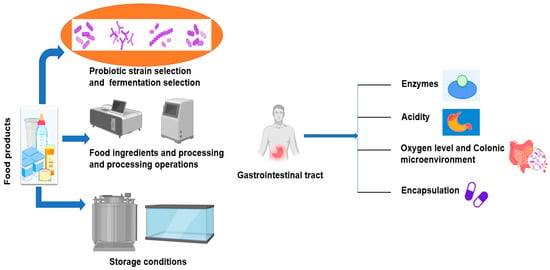
Figure 1
Open AccessCase Report
Abdominal Pain—Beyond Colonic Lipoma Intussusception
by
Raluca-Ioana Dascalu, Gabriel Constantinescu, Alexandru Scafa, Oana-Mihaela Plotogea, Vasile Sandru, Ecaterina Mihaela Rinja, Alexandra Jichitu and Madalina Ilie
Gastroenterol. Insights 2024, 15(1), 213-220; https://doi.org/10.3390/gastroent15010015 - 06 Mar 2024
Abstract
Colonic lipomas are relatively rare benign tumors which are composed of mature fat cells and occur most frequently in the large intestine. The occurrence of colonic lipomas in the transverse colon is relatively uncommon. Generally, colonic lipomas are asymptomatic, and many individuals might
[...] Read more.
Colonic lipomas are relatively rare benign tumors which are composed of mature fat cells and occur most frequently in the large intestine. The occurrence of colonic lipomas in the transverse colon is relatively uncommon. Generally, colonic lipomas are asymptomatic, and many individuals might not experience any noticeable symptoms. Therefore, they are usually discovered incidentally during colonoscopy or as a result of diagnostic imaging prescribed for other reasons. The size and location of the lipoma could influence the clinical presentation. If symptoms occur, they include abdominal pain, changes in bowel habits, or gastrointestinal bleeding. The prognosis for colonic lipomas is generally excellent but it requires an individualized approach based on the specific characteristics of the tumor, the patient’s symptoms, and other clinical considerations. We report a case of a colonic intussusception caused by a colonic lipoma in an adult who underwent surgery, with an uneventful recovery.
Full article
(This article belongs to the Section Gastrointestinal Disease)
►▼
Show Figures

Figure 1
Open AccessReview
GLP-1RA Essentials in Gastroenterology: Side Effect Management, Precautions for Endoscopy and Applications for Gastrointestinal Disease Treatment
by
Justin Wan, Caesar Ferrari and Micheal Tadros
Gastroenterol. Insights 2024, 15(1), 191-212; https://doi.org/10.3390/gastroent15010014 - 18 Feb 2024
Abstract
Amidst the obesity and type II diabetes mellitus (T2DM) epidemics, glucagon-like peptide-1 receptor agonists (GLP-1RAs) stand out as a promising therapeutic ally, achieving notable success in glycemic control and weight management. While GLP-1RAs’ positive clinical outcomes are commendable, they introduce significant gastrointestinal (GI)
[...] Read more.
Amidst the obesity and type II diabetes mellitus (T2DM) epidemics, glucagon-like peptide-1 receptor agonists (GLP-1RAs) stand out as a promising therapeutic ally, achieving notable success in glycemic control and weight management. While GLP-1RAs’ positive clinical outcomes are commendable, they introduce significant gastrointestinal (GI) challenges, emphasizing the pivotal role of gastroenterologists in understanding and managing these implications. Physicians should be vigilant of potential complications if endoscopy is indicated and considered. A protocol coined “The Three E’s: Education, Escalation, and Effective Management” is essential as the first defense against GLP-1RA-induced dyspepsia, necessitating routine GI consultations. Awareness and intervention of potential aspiration due to GLP-1RA-induced gastroparesis are vital in clinical management. Furthermore, the evolving recognition of GLP-1RAs’ beneficial effects on non-alcoholic steatohepatitis (NASH) suggests gastroenterologists will increasingly prescribe them. Thus, a comprehensive understanding of pharmacological properties and potential GI complications, including the undetermined cancer risk landscape, becomes paramount. This review accentuates the nuances of GLP-1RA therapy from a gastroenterological lens, juxtaposing the therapeutic potential, manageable side effects, and circumstantial challenges, ensuring that GI specialists remain at the forefront of holistic care in obesity and T2DM management.
Full article
(This article belongs to the Special Issue Recent Advances in the Management of Gastrointestinal Disorders)
►▼
Show Figures

Figure 1
Open AccessArticle
The Relationship between Serum Zonulin and Innate Immunity in Patients with Inflammatory Bowel Disease
by
Gusel Khusainova, Vadim Genkel, Alla Kuznetsova, Karina Nikushkina, Anna Saenko, Olga Abramovskikh and Anastasiya Dolgushina
Gastroenterol. Insights 2024, 15(1), 179-190; https://doi.org/10.3390/gastroent15010013 - 10 Feb 2024
Abstract
The aim of the study was to investigate the relationship between the serum zonulin and the cellular immunity in patients with ulcerative colitis (UC) and Crohn’s disease (CD). The study included 97 patients, 13 (13.4%) patients with CD and 84 (86.6%) patients with
[...] Read more.
The aim of the study was to investigate the relationship between the serum zonulin and the cellular immunity in patients with ulcerative colitis (UC) and Crohn’s disease (CD). The study included 97 patients, 13 (13.4%) patients with CD and 84 (86.6%) patients with UC. The concentration of zonulin in the serum was studied using the ELISA kits. The investigation of the circulated leukocyte subpopulation was carried out through flow cytometry. The functional activity of the circulating neutrophils was studied using the absorption capacity of the monodisperse polystyrene latex particles and indicators of oxygen-dependent metabolism in the nitroblue tetrazolium test. The serum zonulin concentration in CD patients was significantly higher compared with UC patients (p = 0.003). The zonulin concentration directly correlated with the functional activity of the circulating neutrophils. Patients with a zonulin concentration > 472.4 pg/mL had a significantly higher number of band neutrophils (p = 0.0104), CD3+CD8+ cells (p = 0.0212), NK cells (p = 0.0161), and lower–CD19+ cells (p = 0.0034). Among the IBD patients, zonulin was associated with IBD severity. An increase in the serum concentration of zonulin was associated with an increase in the functional activity of circulating neutrophils and an increase in the number of CD3+CD8+ cells, NK cells, and a decrease in the number of CD19+ cells.
Full article
(This article belongs to the Section Gastrointestinal Disease)
►▼
Show Figures
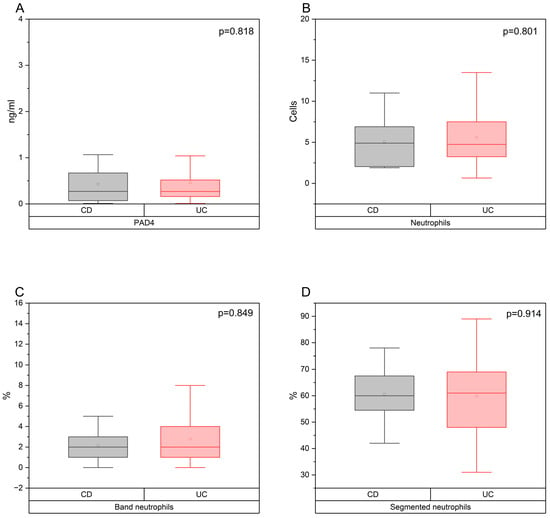
Figure 1
Open AccessArticle
Origin and Clinical Impact of Early Multidrug-Resistant (MDR) Contamination in Patients Undergoing Pancreaticoduodenectomy
by
Martina Sorrentino, Giovanni Capretti, Gennaro Nappo, Francesca Gavazzi, Cristina Ridolfi, Michele Pagnanelli, Martina Nebbia, Paola Morelli and Alessandro Zerbi
Gastroenterol. Insights 2024, 15(1), 168-178; https://doi.org/10.3390/gastroent15010012 - 08 Feb 2024
Abstract
Introduction: Infections caused by multidrug-resistant bacteria (MDR) occur more frequently after pancreaticoduodenectomy (PD) compared to other abdominal surgeries, and infective complications represent a major determinant of postoperative morbidity following PD. Preoperative biliary stent (PBS) placement often leads to biliary contamination, which plays a
[...] Read more.
Introduction: Infections caused by multidrug-resistant bacteria (MDR) occur more frequently after pancreaticoduodenectomy (PD) compared to other abdominal surgeries, and infective complications represent a major determinant of postoperative morbidity following PD. Preoperative biliary stent (PBS) placement often leads to biliary contamination, which plays a significant role in postoperative infections. The aim of this study is to evaluate the impact of MDR contamination on short-term postoperative outcomes in patients undergoing PD and to evaluate the relationship between MDR bacteria, PBS, and bile contamination. Methods: This is a retrospective study based on a prospectively maintained database including 825 consecutive patients who underwent pancreaticoduodenectomies (PDs). All procedures were performed by experienced pancreatic surgeons at a high-volume center and the patients were managed according to the same perioperative enhanced recovery protocol. Results: MDR bacteria were present in 17.5% of bile cultures, exclusively within the stented group. At the multivariate analysis, the development of major postoperative complications (MPC) was correlated with the presence of MDR bacteria in the bile (OR 1.66, 95% CI: 1.1–2.52; p = 0.02). MDR bacteria were detected early in the surgical drainage in 144 out of 825 patients (12.1%), with 72.2% having a previous biliary stent placement and 27.8% without stents (p < 0.001). Moreover, the development of an MPC was associated with the presence of MDR bacteria in the drainage (OR = 1.81, 95% CI: 1.21–2.73, p = 0.0042). Conclusions: We demonstrated that MDR contamination worsens the short-term outcomes of patients undergoing PDs. Specifically, when MDR bacteria are present in both the bile and drainage, there is a statistically significant increase in the incidence of major postoperative complications (MPC). Our data suggest that the majority of MDR surgical site infections stem from biliary contamination resulting from the placement of a preoperative biliary stent (PBS).
Full article
(This article belongs to the Section Biliary Content)
►▼
Show Figures
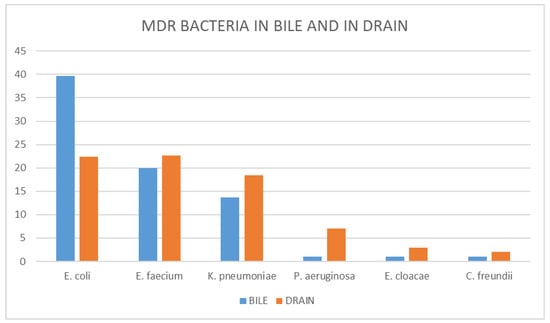
Figure 1
Open AccessReview
Benign Recurrent Intrahepatic Cholestasis: Where Are We Now?
by
Eleni V. Geladari, Natalia G. Vallianou, Evangelia Margellou, Dimitris Kounatidis, Vassilios Sevastianos and Alexandra Alexopoulou
Gastroenterol. Insights 2024, 15(1), 156-167; https://doi.org/10.3390/gastroent15010011 - 06 Feb 2024
Abstract
Benign recurrent intrahepatic cholestasis (BRIC) stands as a rare genetic contributor to cholestasis, aligning itself within the spectrum of inherited intrahepatic cholestasis syndromes, such as progressive familial intrahepatic cholestasis (PFIC) and intrahepatic cholestasis of pregnancy. Manifesting in infancy or early adulthood, BRIC is
[...] Read more.
Benign recurrent intrahepatic cholestasis (BRIC) stands as a rare genetic contributor to cholestasis, aligning itself within the spectrum of inherited intrahepatic cholestasis syndromes, such as progressive familial intrahepatic cholestasis (PFIC) and intrahepatic cholestasis of pregnancy. Manifesting in infancy or early adulthood, BRIC is marked by recurrent episodes of jaundice accompanied by intense pruritus, enduring from weeks to years across the lifespan. Normal gamma-glutamyl transferase (GGT) levels are a characteristic laboratory finding. Initially considered unlikely to progress to chronic liver disease or cirrhosis, some reports suggest BRIC may evolve into a continuous and progressive form of cholestasis. Moreover, these recurrent cholestatic episodes significantly impact quality of life, and certain mutations elevate the risk of hepatobiliary malignancy. Between episodes, histological findings of centrilobular cholestasis and abnormal laboratory parameters revert to normal, potentially obviating the need for liver biopsy. This review focuses on the genetic aspects of BRIC, its pathophysiology, clinical presentation, and prognosis. Additionally, it outlines triggering factors and available treatment options.
Full article
(This article belongs to the Special Issue Feature Papers in Liver Research)
►▼
Show Figures
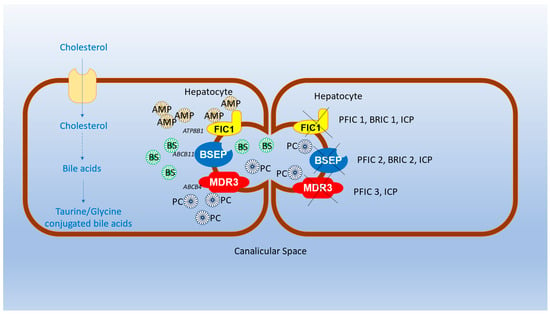
Figure 1
Open AccessArticle
Linked Color Imaging of Barrett’s Esophageal Adenocarcinoma: Effects on Visibility
by
Masahiro Saito, Tomoyuki Koike, Yuki Ohara, Yohei Ogata, Takeshi Kanno, Xiaoyi Jin, Waku Hatta, Kaname Uno, Naoki Asano, Akira Imatani and Atsushi Masamune
Gastroenterol. Insights 2024, 15(1), 145-155; https://doi.org/10.3390/gastroent15010010 - 05 Feb 2024
Abstract
Since linked color imaging (LCI) has been reported to increase the color differences in Barrett’s esophageal adenocarcinoma (BA) compared to white light imaging (WLI), a comparison of the visibility scores of various imaging techniques for BA is warranted to determine best practice standards.
[...] Read more.
Since linked color imaging (LCI) has been reported to increase the color differences in Barrett’s esophageal adenocarcinoma (BA) compared to white light imaging (WLI), a comparison of the visibility scores of various imaging techniques for BA is warranted to determine best practice standards. This study is to clarify the role of LCI, blue light imaging (BLI), and WLI in the evaluation of BA. A group of 19 endoscopists, comprised of 6 experts and 13 trainees, evaluated the visibility of WLI, BLI, and LCI images in 21 superficial BA cases. Visibility scores were compared between WLI, BLI, and LCI. Visibility scores were also evaluated for lesion morphology, background Barrett’s mucosa, and circumferential location. The visibility scores of experts and trainees were analyzed for comparison. The visibility scores of LCI and BLI were 3.83 and 3.31, respectively, compared to three points for WLI. The visibility of LCI was better than that of WLI regardless of lesion morphology, color, background Barrett’s mucosa, and circumferential location. The LCI improved visibility in BA more than the WLI for both experts and trainees. LCI improved the visibility of BA independent of lesion morphology, color, background Barrett’s mucosa, circumferential location, and the endoscopist’s experience.
Full article
(This article belongs to the Special Issue Recent Advances in the Management of Gastrointestinal Disorders)
►▼
Show Figures

Figure 1
Open AccessReview
Differential Diagnoses and Management Approaches for Gastric Polyposis
by
Masaya Iwamuro, Seiji Kawano and Motoyuki Otsuka
Gastroenterol. Insights 2024, 15(1), 122-144; https://doi.org/10.3390/gastroent15010009 - 27 Jan 2024
Abstract
Multiple gastric polyps are observed in various polyposis syndromes and conditions associated with polypoid lesion development in the stomach. Polyposis syndromes often occur concurrently with specific malignant tumors and can manifest at any point in an individual’s lifespan, thus explaining the diversity in
[...] Read more.
Multiple gastric polyps are observed in various polyposis syndromes and conditions associated with polypoid lesion development in the stomach. Polyposis syndromes often occur concurrently with specific malignant tumors and can manifest at any point in an individual’s lifespan, thus explaining the diversity in surveillance methods. Furthermore, genetic counseling and surveillance are essential not only for the patients themselves but also for their blood relatives. Therefore, the accurate diagnosis and appropriate surveillance of multiple gastric polyps are crucial for improving patient outcomes. This review aims to provide essential information on such lesions along with representative endoscopic images of familial adenomatous polyposis, Peutz-Jeghers syndrome, Cowden syndrome, Cronkhite-Canada syndrome, juvenile polyposis syndrome, gastric adenocarcinoma and proximal polyposis of the stomach, neuroendocrine tumors in autoimmune gastritis, proton pump inhibitor-related gastric mucosal changes, and multiple submucosal heterotopic glands. We wish for this review to serve as a valuable resource for endoscopists seeking to deepen their comprehension of gastric polyposis.
Full article
(This article belongs to the Special Issue Recent Advances in the Management of Gastrointestinal Disorders)
►▼
Show Figures
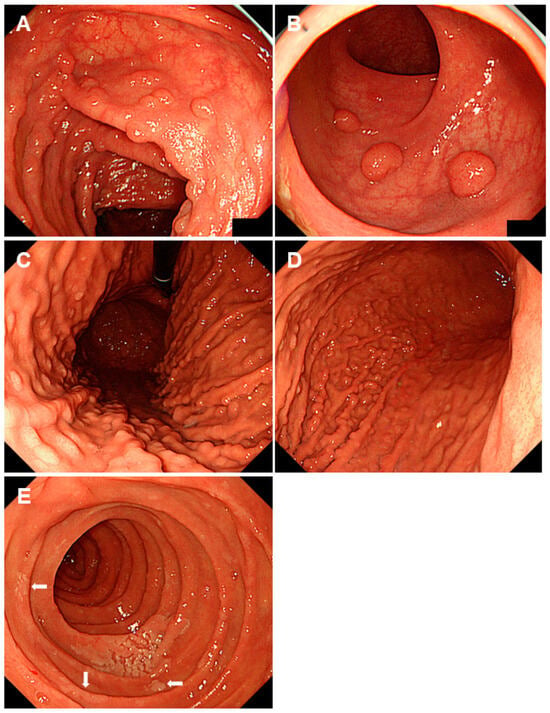
Figure 1
Open AccessArticle
The Prognostic Utility of KRAS Mutations in Tissue and Circulating Tumour DNA in Colorectal Cancer Patients
by
Joel Petit, Georgia Carroll, Jie Zhao, Peter Pockney and Rodney J. Scott
Gastroenterol. Insights 2024, 15(1), 107-121; https://doi.org/10.3390/gastroent15010008 - 27 Jan 2024
Abstract
This study aims to investigate the long-term prognostic utility of circulating tumour DNA (ctDNA) KRAS mutations in colorectal cancer (CRC) patients and compare this with KRAS mutations in matched tissue samples. Tumour tissue (n = 107) and ctDNA (n = 80)
[...] Read more.
This study aims to investigate the long-term prognostic utility of circulating tumour DNA (ctDNA) KRAS mutations in colorectal cancer (CRC) patients and compare this with KRAS mutations in matched tissue samples. Tumour tissue (n = 107) and ctDNA (n = 80) were obtained from patients undergoing CRC resection and were analysed for KRAS mutations. The associations between KRAS mutation and overall survival (OS), cancer-specific survival (CSS), and recurrence-free survival (RFS) were analysed. All outcomes were measured in years (y). A total of 28.8% of patients had KRAS mutations in ctDNA and 72.9% in tumour tissue DNA. The high frequency of KRAS mutations in tissue samples was due to 51.4% of these being a detectable low mutation allele frequency (<10% MAF). Comparing KRAS mutant (KRASmut) to KRAS wild-type (KRASwt) in ctDNA, there was no association found with OS (mean 4.67 y vs. 4.34 y, p = 0.832), CSS (mean 4.72 y vs. 4.49 y, p = 0.747), or RFS (mean 3.89 y vs. 4.26 y, p = 0.616). Similarly, comparing KRASmut to KRASwt in tissue DNA there was no association found with OS (mean 4.23 y vs. 4.61 y, p = 0.193), CSS (mean 4.41 y vs. 4.71 y, p = 0.312), or RFS (mean 4.16 y vs. 4.41 y, p = 0.443). There was no significant association found between KRAS mutations in either tissue or ctDNA and OS, CSS, or RFS.
Full article
(This article belongs to the Section Gastrointestinal Disease)
►▼
Show Figures
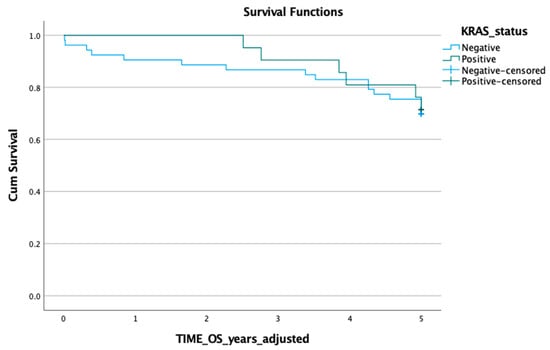
Figure 1
Open AccessArticle
Platelet Count/Spleen Diameter Ratio as a Non-Invasive Predictor of Esophageal Varices in Cirrhotic Patients: A Single-Center Experience
by
Srinith Patil, Swarup Kumar Patnaik, Manjit Kanungo, Kanishka Uthansingh, Jimmy Narayan, Subhasis Pradhan, Debakanta Mishra, Manoj Kumar Sahu and Girish Kumar Pati
Gastroenterol. Insights 2024, 15(1), 98-106; https://doi.org/10.3390/gastroent15010007 - 26 Jan 2024
Abstract
(1) Background: The current study examined the correlations between platelet count (PC), spleen diameter (SD), and their ratio to establish a non-invasive technique for predicting the presence of oesophageal varices in cirrhotic patients. (2) Methods: The current study was an observational study conducted
[...] Read more.
(1) Background: The current study examined the correlations between platelet count (PC), spleen diameter (SD), and their ratio to establish a non-invasive technique for predicting the presence of oesophageal varices in cirrhotic patients. (2) Methods: The current study was an observational study conducted in the Gastroenterology Department at IMS and SUM Hospital from November 2019 to November 2021. Consecutive cirrhotic patients without a history of gastrointestinal bleeding were enrolled in the study, and the esophageal varices were assessed. The patients underwent the necessary tests, including upper gastrointestinal endoscopy, liver function testing, abdominal ultrasonography, and full hemograms. All these parameters were analyzed statistically through SPSS version 23, and p ≤ 0.05 was considered statistically significant. (3) Results: There were significant differences between cases with and without esophageal varices in the following parameters: PC, SD and their ratio, hemoglobin, and ALT level. The PC/SD ratio of ≤ 1400 was associated with a sensitivity of 90.9%, specificity of 80.8%, and a positive predictive value of 82.56% in predicting the presence of oesophageal varices, as per receiver operating curve (ROC) analysis in our study. (4) Conclusions: Esophageal varices can be predicted non-invasively using the platelet count, spleen diameter, and PC/SD ratio.
Full article
(This article belongs to the Section Liver)
►▼
Show Figures
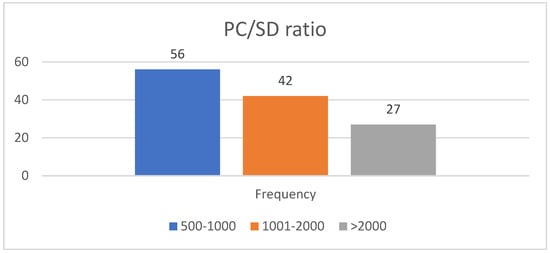
Figure 1
Open AccessStudy Protocol
Outcomes and Predictors of 30-Day Readmission in Patients with Hepatocellular Carcinoma Undergoing Transarterial Chemoembolization between 2016 and 2018
by
Ifrah Fatima, Mohamed Ahmed, Wael T. Mohamed, Vinay Jahagirdar, Kevin F. Kennedy and Alisa Likhitsup
Gastroenterol. Insights 2024, 15(1), 87-97; https://doi.org/10.3390/gastroent15010006 - 22 Jan 2024
Abstract
Background: Hepatocellular carcinoma (HCC) is the third leading cause of cancer death worldwide. The 5-year survival rate for liver cancer in the US has improved from 3% four decades ago to 20% now. Transarterial chemoembolization (TACE) is the treatment of choice for stage
[...] Read more.
Background: Hepatocellular carcinoma (HCC) is the third leading cause of cancer death worldwide. The 5-year survival rate for liver cancer in the US has improved from 3% four decades ago to 20% now. Transarterial chemoembolization (TACE) is the treatment of choice for stage B/intermediate-stage HCC. Complications of TACE include hepatic encephalopathy, liver failure, post-embolization syndrome, duodenal ulcers, liver abscesses, acute cholecystitis, and injury to the biliary tract. This study evaluates the 30-day readmission rate and predictors of readmission among patients with HCC undergoing TACE. Methods: The 2016–2018 Healthcare Cost and Utilization Project (HCUP) database, which includes the National Readmission Database (NRD), was used. All adult patients with HCC who underwent TACE were identified using the International Classification of Diseases (ICD-10). The rate of 30-day readmissions after TACE and the associated diagnoses were identified. Logistic regression was used to obtain adjusted odds ratios for variables associated with 30-day readmission. Results: A total of 566 patients underwent TACE between 2016–2018. Sixty-five patients were excluded due to death and unavailability of 30-day readmission data. The procedure was performed in large (80.4%), metro-teaching hospitals (94.5%). Mean patient age was 65.1 ± 9.9 years, and 74% of patients were male. Among the 501 patients, 81 (16.2%) were readmitted within 30 days. The mean age for readmitted patients was 63.2 ± 11.0 and 69.1% were male. The mean length of stay at readmission was 5.5 ± 7.3 days. A total of 7.4% of patients had neurological disorders, 17.3% had weight loss, 30.9% had fluid and electrolyte imbalance, and 21.0% had hepatic encephalopathy. The most common primary diagnoses at 30-day readmission were liver cell carcinoma, sepsis, and liver failure. Univariate analysis for variables associated with 30-day readmission included hepatic encephalopathy (OR 3.45; 95% CI 1.8–6.62; p = 0.0002), underlying neurological disorders (OR 3.28; 95% CI 1.16–9.3; p = 0.03), weight loss (OR 2.82; 95% CI 1.42–5.61; p = 0.003), and Medicaid status (OR 1.74; 95% CI 1.05–2.88; p = 0.03). Multivariable analysis showed hepatic encephalopathy (OR 2.91; 95% CI 1.4, 6.04; p = 0.04) and weight loss (OR 2.37; 95% CI 1.13–4.96; p = 0.02) were associated with hospital readmission. Conclusions: Weight loss and hepatic encephalopathy were predictors for 30-day readmission after a TACE procedure for HCC.
Full article
(This article belongs to the Section Liver)
Open AccessArticle
Habitual Dietary Intake and Adherence to Dietary Guidelines of Patients with Inflammatory Bowel Diseases
by
Małgorzata Godala, Ewelina Gaszyńska, Konrad Walczak and Ewa Małecka-Wojciesko
Gastroenterol. Insights 2024, 15(1), 69-86; https://doi.org/10.3390/gastroent15010005 - 18 Jan 2024
Abstract
Inflammatory bowel disease (IBD) belongs to a group of autoimmune conditions characterized by chronic inflammation and mucosal ulceration of the gastrointestinal tract. The etiology of IBD is complex. The etiological factors include environmental factors, among which diet is important. The aim of this
[...] Read more.
Inflammatory bowel disease (IBD) belongs to a group of autoimmune conditions characterized by chronic inflammation and mucosal ulceration of the gastrointestinal tract. The etiology of IBD is complex. The etiological factors include environmental factors, among which diet is important. The aim of this study was to evaluate the diet of IBD patients. This case–control study was carried out on 82 patients with IBD; the control group consisted of 80 clinically healthy subjects. Food intake was assessed using a 24 h recall and frequency food questionnaire. Energy intake in the IBD group was insufficient and significantly lower than in the control group. The energy intake in the group of patients with active IBD was significantly lower than in the group of subjects in remission. The total fat and protein intake was significantly lower in the IBD group compared to the healthy subjects. IBD patients were characterized by underconsumption of all food groups analyzed, except for the intake of red meat and poultry. Our study showed inadequate intake of energy and most nutrients in IBD patients, even during the remission period. The study indicates the need for routine assessment of dietary intake and nutrition among IBD patients, as well as potential dietary interventions aimed at improving the energy and nutritional quality of diet in order to optimize treatment outcomes and prevent the development of accompanying diseases.
Full article
(This article belongs to the Special Issue Nutrition and Gastrointestinal Diseases: From the Basic Science to the Clinical Practice)
Open AccessReview
New Developments in the Ultrasonography Diagnosis of Gallbladder Diseases
by
Lara Mencarini, Amanda Vestito, Rocco Maurizio Zagari and Marco Montagnani
Gastroenterol. Insights 2024, 15(1), 42-68; https://doi.org/10.3390/gastroent15010004 - 18 Jan 2024
Abstract
Gallbladder diseases are very common, and their diagnosis is based on clinical–laboratory evaluation and imaging techniques. Considering the different imaging diagnostic tools, ultrasound (US) has the advantage of high accuracy combined with easy availability. Therefore, when a gallbladder disease is suspected, US can
[...] Read more.
Gallbladder diseases are very common, and their diagnosis is based on clinical–laboratory evaluation and imaging techniques. Considering the different imaging diagnostic tools, ultrasound (US) has the advantage of high accuracy combined with easy availability. Therefore, when a gallbladder disease is suspected, US can readily assist the clinician in the medical office or the emergency department. The high performance of US in the diagnosis of gallbladder diseases is mainly related to its anatomic location. The most frequent gallbladder pathological condition is gallstones disease, easily diagnosed via US examination. Acute cholecystitis (AC), a possible complication of gallstone disease, can be readily recognized due to its specific sonographic features. Additionally, a number of benign, borderline or malignant gallbladder lesions may be detected via US evaluation. The combined use of standard B-mode US and additional sonographic techniques, such as contrast-enhanced ultrasonography (CEUS), may provide a more detailed study of gallbladder lesions. Multiparametric US (combination of multiple sonographic tools) can improve the diagnostic yield during gallbladder examination.
Full article
(This article belongs to the Section Gastrointestinal and Hepato-Biliary Imaging)
►▼
Show Figures

Figure 1
Highly Accessed Articles
Latest Books
E-Mail Alert
News
Topics
Topic in
Gastroenterology Insights, Infectious Disease Reports, Life, Microbiology Research, Microorganisms
High-Throughput Analyses as a Multi-Faceted Approach for Characterizing the Human Microbiota
Topic Editors: Simone Filardo, Rosa Sessa, Andrea Carolina EntrocassiDeadline: 30 October 2024

Conferences
Special Issues
Special Issue in
Gastroenterology Insights
Nutrition and Gastrointestinal Diseases: From the Basic Science to the Clinical Practice
Guest Editor: Emanuele RinninellaDeadline: 30 April 2024
Special Issue in
Gastroenterology Insights
Novelties in Gastrointestinal Surgery
Guest Editors: Diego Coletta, Andrea BallaDeadline: 30 May 2024
Special Issue in
Gastroenterology Insights
Recent Advances in the Management of Gastrointestinal Disorders
Guest Editor: Micheal TadrosDeadline: 30 June 2024
Special Issue in
Gastroenterology Insights
Feature Papers in Celiac Disease
Guest Editor: Alessandro GranitoDeadline: 31 July 2024
Topical Collections
Topical Collection in
Gastroenterology Insights
Advances in Gastrointestinal Cancer
Collection Editors: Nai-Jung Chiang, Chien-Feng Li, Ching-Chieh Yang
Topical Collection in
Gastroenterology Insights
Gastroenterological Aspects of COVID-19 Infection
Collection Editors: Tsvetelina Velikova, Radislav Nakov, Monika Peshevska-Sekulovska


